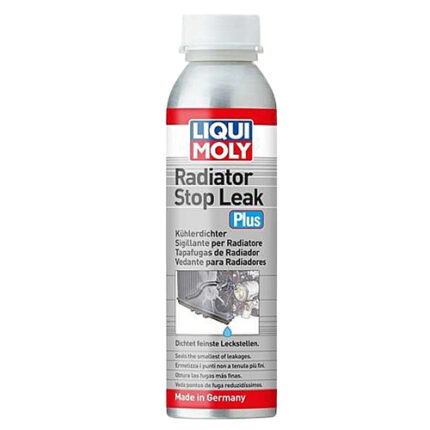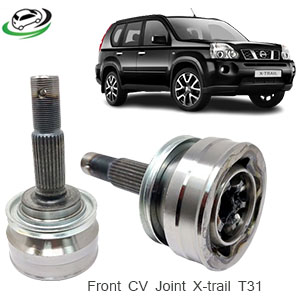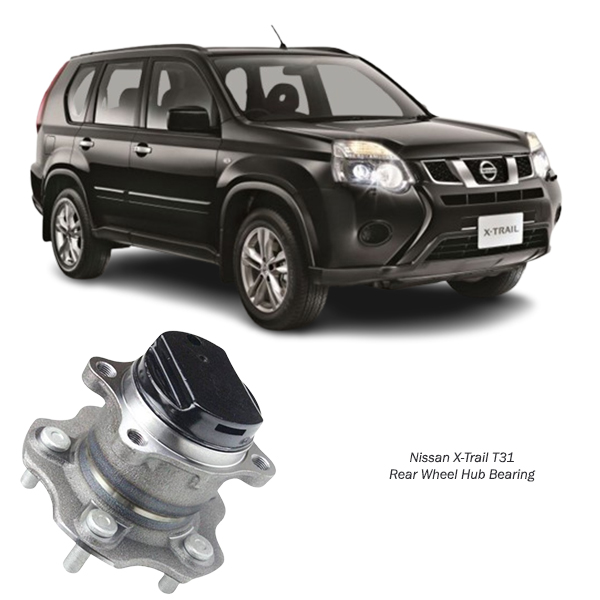-6%
Get Nissan X-Trail T31 Rear Wheel Hub Bearing 43202-JG000 in Kenya
The rear wheel hub bearing is an integral component of a vehicle’s wheel assembly, ensuring smooth wheel rotation and maintaining the vehicle’s stability. It supports the weight of the vehicle while minimizing friction and enabling precise wheel movement. Though often overlooked, its role in safety, performance, and driving comfort is paramount.
This comprehensive guide explores the rear wheel hub bearing’s functions, construction, types, common issues, maintenance, and replacement tips, emphasizing its importance to vehicle operation.
What Is a Rear Wheel Hub Bearing?
A rear wheel hub bearing is a precisely engineered component located within the hub assembly of a vehicle’s rear wheels. It consists of a set of steel balls or rollers housed in a metal ring, known as a race. These bearings allow the wheels to rotate with minimal resistance while supporting the vehicle’s load and absorbing lateral forces during steering and cornering.
Key Features:
- Load Support: Handles both radial (vertical) and axial (side-to-side) loads.
- Durability: Made to withstand high stress and varying environmental conditions.
- Precision Engineering: Ensures smooth and stable wheel rotation.
Functions of a Rear Wheel Hub Bearing
- Facilitating Wheel Rotation:
- The primary role of the hub bearing is to enable the rear wheels to rotate smoothly, ensuring efficient power transfer from the drivetrain to the wheels.
- Supporting the Vehicle’s Weight:
- It bears the vehicle’s weight and any additional load, distributing forces evenly across the axle.
- Reducing Friction:
- By minimizing resistance between the moving and stationary parts, it improves fuel efficiency and reduces wear on other components.
- Maintaining Wheel Alignment:
- The hub bearing keeps the wheel aligned, ensuring stable and predictable handling.
- Enhancing Safety:
- A properly functioning hub bearing contributes to effective braking, steering, and overall vehicle stability.
Construction of a Rear Wheel Hub Bearing
A typical rear wheel hub bearing comprises the following components:
- Outer Race:
- The outer ring that contains the rollers or balls, forming the external boundary of the bearing.
- Inner Race:
- The inner ring that fits snugly over the hub spindle or axle.
- Rolling Elements:
- Steel balls or cylindrical rollers that roll between the inner and outer races, reducing friction.
- Cage:
- A metal or plastic structure that holds the rolling elements in place and ensures even spacing.
- Seal:
- Prevents dirt, water, and debris from entering the bearing, while retaining lubricant for smooth operation.
- Grease or Lubrication:
- A specialized lubricant within the bearing reduces friction and prevents overheating.
Types of Rear Wheel Hub Bearings
- Ball Bearings:
- Use spherical rolling elements, ideal for light to moderate loads. Common in cars and small vehicles.
- Roller Bearings:
- Employ cylindrical rollers, offering higher load capacity. Suitable for heavy-duty vehicles.
- Tapered Roller Bearings:
- Designed to handle both radial and axial loads, commonly found in trucks and SUVs.
- Integral Bearings:
- Include the hub and bearing as a single unit, simplifying installation and maintenance.
- Pre-Sealed Bearings:
- Come with built-in seals and lubrication, requiring no maintenance.
Signs of a Worn or Failing Rear Wheel Hub Bearing
- Noise:
- A humming, grinding, or growling noise coming from the rear wheels is a common sign of bearing wear.
- Vibration or Wobbling:
- Excessive play in the wheel or noticeable vibration while driving indicates a potential issue with the bearing.
- Uneven Tire Wear:
- A damaged bearing can cause uneven tire wear due to improper wheel alignment.
- ABS Warning Light:
- Faulty bearings in modern vehicles may trigger the ABS warning light, as the bearing often houses the wheel speed sensor.
- Difficulty Steering:
- Increased resistance or looseness in the steering may result from a failing rear hub bearing.
- Burning Smell:
- Overheated bearings can emit a burning odor, often caused by insufficient lubrication.
Causes of Rear Wheel Hub Bearing Failure
- Lack of Lubrication:
- Insufficient grease leads to increased friction and wear.
- Contamination:
- Dirt, water, and road debris can infiltrate the bearing, causing corrosion and damage.
- Overloading:
- Carrying excessive loads puts undue stress on the bearings.
- Impact Damage:
- Potholes, curbs, and road collisions can crack or deform the bearing.
- Aging:
- Bearings degrade over time due to regular wear and tear.
- Improper Installation:
- Incorrect installation can cause misalignment and premature failure.
Maintaining Rear Wheel Hub Bearings
- Regular Inspections:
- Check for noise, play, or signs of wear during routine maintenance.
- Keep Bearings Clean:
- Prevent contamination by ensuring seals remain intact.
- Avoid Overloading:
- Stick to the vehicle’s weight limits to minimize stress on the bearings.
- Use Quality Components:
- Replace worn bearings with high-quality or OEM parts for longevity.
- Drive Safely:
- Avoid harsh impacts from potholes and road hazards to protect the bearings.
Replacing a Rear Wheel Hub Bearing
When to Replace:
- Bearings should be replaced immediately if they show signs of wear or failure. Delaying replacement can lead to further damage to the suspension and drivetrain.
Required Tools:
- Jack, jack stands, socket set, torque wrench, bearing press, and replacement bearing.
Replacement Steps:
- Lift the Vehicle:
- Safely raise the rear of the vehicle using a jack and secure it with jack stands.
- Remove the Wheel:
- Take off the wheel to access the hub assembly.
- Detach the Brake Components:
- Remove the caliper and rotor to expose the hub bearing.
- Unbolt the Hub Assembly:
- Loosen and remove the bolts securing the hub to the axle.
- Extract the Old Bearing:
- Use a bearing press to remove the old bearing from the hub assembly.
- Install the New Bearing:
- Press the replacement bearing into place, ensuring it is seated correctly.
- Reassemble Components:
- Reattach the hub, brake components, and wheel.
- Torque to Specifications:
- Tighten all bolts to the manufacturer’s recommended torque settings.
- Test Drive:
- Verify smooth operation and absence of noise or vibration.
Benefits of High-Quality Rear Wheel Hub Bearings
- Enhanced Safety:
- Reliable bearings ensure stable handling and effective braking.
- Improved Performance:
- Smooth wheel rotation contributes to better fuel efficiency and acceleration.
- Longevity:
- Durable materials and precision engineering offer extended service life.
- Reduced Maintenance Costs:
- High-quality bearings minimize the need for frequent repairs.
- Comfort:
- Properly functioning bearings reduce noise and vibration, enhancing ride quality.
Environmental Considerations
- Recycling Old Bearings:
- Bearings are made from recyclable materials, reducing environmental impact.
- Eco-Friendly Practices:
- Choose bearings manufactured using sustainable processes when available.
Conclusion
The rear wheel hub bearing is a critical component of the wheel assembly, playing a central role in vehicle safety, performance, and comfort. Understanding its functions, identifying signs of wear, and maintaining it properly can prevent costly repairs and ensure a smooth driving experience.
Whether you’re a vehicle owner, technician, or automotive enthusiast, investing in high-quality rear wheel hub bearings and adhering to proper maintenance practices is essential for the optimal performance and safety of your vehicle.
Follow us on Facebook for more parts.



